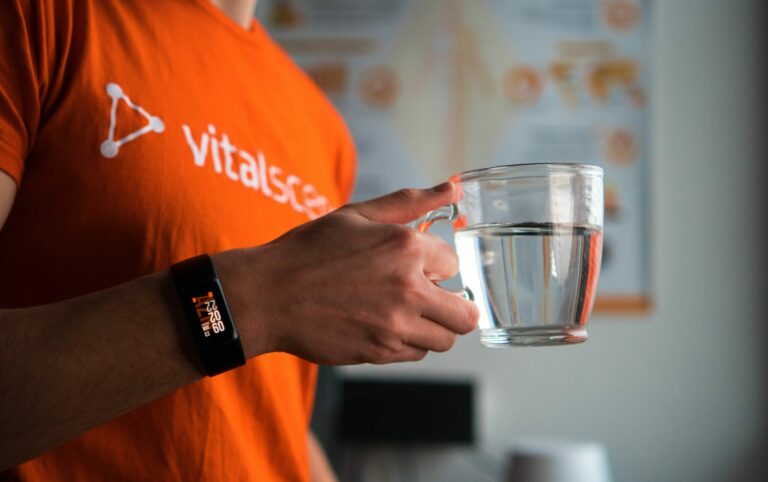Fasting Protocols: 16 8 vs 5 2 Fasting – Which is Better?
Fasting or time-restricted eating is one of the most popular forms of dieting. It is about extending the fasting window, where we do not ingest any food, and having all our food at a certain period of the day.
16:8 vs 5:2 Fasting. Which one is better? There are so many fasting protocols. The most popular form is intermittent fasting, the 16:8 fasting model. The question isn’t which one’s the best, but what are the differences, since both can promote health benefits.
16:8 Fasting
The 16 to 8 fasting model is one of the most popular eating regimes. It’s where you eat in a window of eight hours and fast for 16 hours. For example, you can eat your first meal at 12 noon, and then your last meal, your dinner at 8 pm.
This window of fasting allows the body to clear itself from the inside out. It may result in improved weight loss and fat loss, improved insulin sensitivity, reduced inflammation, and increased alertness.
5:2 Fasting
The 5:2 fasting model is a lot more aggressive and acute. It’s not done on a daily basis, but rather once a week, or a month. It’s more of a “fasting shock”, providing certain stressors to which cellular adaptation is stimulated, leading to an enhanced regeneration.
It’s about eating the way we would for 5 days, and taking two days off. Sounds interesting? I know, not a lot. Many people can mimic its keto effects and get most of the benefits by eating <25% of daily calories (somewhere around 500kcal) on the non-eating days on your 48h “fasting” window.
Supposably, the 5:2 fasting model is more focused on stimulating autophagy, increasing longevity, and cellular repair. It’s the ultimate reset model of fasting which works deeper in our body, potentially protecting the brain and enhancing its function.
Differences: 16 8 vs 5 2 Fasting Protocols
Intermittent fasting is a well-researched approach to dieting, which has successfully reduced body weight, improved insulin sensitivity, and improved eating patterns in many people. It’s a convenient approach to dieting, which most can fit into their lifestyles.
Even if your primary focus isn’t fat loss, Intermittent fasting can give you a boost in alertness, support metabolic health, and keep your hunger in check.
Most of the benefits of fasting are similar to the effects of the ketogenic diet. It is when we run off of glucose that we must start using fat for fuel, which is important for improving metabolic health and insulin sensitivity.
On the other hand, longer 48-hour fasting is harder to adhere to, slightly riskier for running into hypoglycemia, but works on a deeper level. It’s the ultimate approach to anti-aging, cellular repair, and internal cleansing, as it stimulates autophagy.
Which fasting method is best for weight loss?
Intermittent fasting is the most practical, as it’s easy to adhere to while maintaining a relatively normal eating schedule – only skipping breakfast. On the other hand, science tips the scale more toward 5:2 fasting, or 5 normal eating days with 2 days of <25% of total calories ingested, which puts you at a significant caloric deficit.
What can you drink when fasting?
Anything that has zero calories. That’s water, herbal tea, black coffee, etc. No sugary drinks, no energy drinks, or coffee with milk.

Physiology: The Stages Of Fasting
It’s important to understand the difference between daily 16 hours of fasting to a prolonged fast of 48 hours. We need to look at the physiology of fasting and what it does to our bodies. What happens during a 48-hour fast is distinctly different from a 12 or 16-hour fast.
This chain of events will serve as a backbone to understanding why certain benefits occur with long, and not short fasting – and the other way around. It’s important to understand it, so we can fit our fasting schedule to achieve the benefits we’re looking for. (1) (2) (3)
0-4 Hours
4-20 Hours
18-36-48 Hours
0-4 Hours: After eating a meal, there’s an anabolic state in which insulin is secreted to transfer glucose into tissues. There is a process of digestion, food breakdown, utilization, and metabolism of nutrients, in which we’re still in the FED state.
4-20 Hours: The second stage is getting into ketosis. It’s when blood glucose has been used, so levels of both glucose and insulin are lowered. Glucagon increases, breaking down glycogen to produce more energy for our vital organs. Most of the ketogenic benefits of fasting occur during this 12-20 window. These are your fat-loss, insulin reset, and alertness boost.
18-36-48 Hours: Is when ketosis gets serious. Ketone production increases, and we burn fat via beta-oxidation. Gluconeogenesis kickstarts, ghrelin production decreases. We’re officially in the active metabolic state. This is where Autophagy peaks to recycle old, dysfunctional junk cells. This is where the deep cellular repair takes place.
Pro Tip
How fast we enter a fasting state or autophagy or ketosis depends on many factors. The better our metabolic flexibility, the more fats and fewer carbs we eat, the more active we are – the faster we enter these states.
Disclaimer: Fasting is not for everyone. Always consult your doctor before attempting fasting, or any other nutritional regime.

16:8 Intermittent Fasting Benefits
16 hours of fasting seems quite an effective way to reduce body fat, balance hunger hormones, and reduce blood pressure and lipids. (4)
The effects of short-term fasting, like 12 to 16 hours, are more pronounced in less metabolically healthy people. Say a young, vital, healthy, and lean person – wouldn’t get such a fat-loss or cognitive boost effect as someone who’s obese.
Intermittent energy restriction has been shown to be as effective as continuous energy restriction for body fat loss and weight loss. (5) This is partially logical due to the fact that when people practice intermittent fasting, they are also reducing their caloric intake by around 20%.
Aside from its metabolic health-supportive effects, fasting can also improve cognitive function, and neuroprotection, and reduce inflammation in the body. (6) (7) (8) (9)
conclusion
The 16:8 Fasting can be a practical and effective tool for weight loss, fat loss, glycemic control, and insulin sensitivity. Besides its metabolic benefits, it aids in brain health and protects from oxidative stress and inflammation.
5:2 48h Fast Benefits
The 5:2 fasting method is usually a more aggressive and acute way of fasting. The 48-hour fast is like taking a two-day break from food that’s done on a monthly basis, not so regularly. It’s also not a clean fast, meaning one doesn’t go without food, but restricts total calorie intake to <25%.
It’s more extreme and may lead to glucose drops or hormonal imbalances in some. It is about shocking the body in starvation mode so we can kick-start all of these processes related to cellular repair and autophagy.
Prolonged fasting or caloric restriction can stimulate certain Sirtuins and AMPK pathways in the body which are related to longevity and better health. It has unique regenerative properties that may enhance health span and promote cellular protection. (10) (11)
Comparing intermittent energy and carbohydrate restriction (like the 5:2 fasting) to daily energy restriction at 25%, this study was the closest we could find to a specific fasting model comparison:
- The IECR or 5:2 group ate <25% calories on the 2 fasting days
- The DER (caloric restriction) ate 25% fewer calories 7 days a week
- The IECR group, closest to the 5:2 fasting model was more effective in reducing body fat and insulin resistance compared to the caloric restriction. (12)
Conclusion
Longer fasting like 48h is more centered toward longevity, cellular repair, and anti-aging. It’s an acute shock that can trigger autophagy, thus removing dysfunctional cells and stimulating pathways like AMPK and Sirtuins, related to longevity.
Practicality, Metabolic Flexibility, and Precaution
Precaution: Is It Safe? Who Should Avoid it?
Is fasting safe? That’s a common question. It seems:
- that the 12:12 is quite a safe fasting model
- that 16:8 is doable with minimal to no side effects in many. The most popular, effective, and sustainable model for fat loss, cognition, inflammation, and glycemic control.
- Anything beyond 16 hours should be closely monitored (under supervision)
- Prolonged fasting (24-48h+) can lead to hypoglycemia, energy crashes, irritability, etc.
- It depends on sex, glycemic control, activity level, metabolic flexibility, and many other factors.
Disclaimer: The groups for whom fasting is NOT recommended are frail or underweight people, children, and teenagers, pregnant or breastfeeding women, and people with eating disorders like bulimia or anorexia
Metabolic Flexibility
Metabolic flexibility is about learning to switch between different sources of fuel. The faster you can switch from glucose to ketones, the better your metabolic flexibility is.
To be metabolically flexible also means you’re more metabolically efficient. You can produce more energy on a cellular level, faster. Doing intermittent fasting or switching between a high-carb and low-carb (or keto) diet trains your metabolic flexibility.
Prolonged fasting helps you to activate the so-called “metabolic switch”. This is when you go from wasting glycogen stores and using glucose for energy to burning adipose tissues or fats to produce ketones. It usually happens within a window of 12 to 36 hours, depending on many factors. (13)
Pro Tip
Entering ketosis faster is one of the best skills the body learns through fasting. This improves your metabolic flexibility thus, optimizing the efficiency of energy production in your body. The more active you are, the more low-carb you eat, and the more you fast the faster this transition will be.

Practicality
It’s ignorant to talk about eating schedules without talking about their practicality. So far, although the data shows that alternate date fasting or the 5:2 may lead to quicker weight loss, on average, people stick more than a 16:8 model.
16:8 fasting is very practical and can fit easily in many different scenarios. Eating lunch or dinner together is doable, whereas 5:2 may be too much for someone who’s enjoying a weekend brunch with the family. It’s all about personal preference.
Also, the 48-hour fasting is a lot harder to maintain. Hunger levels go through the roof. Glucose may drop too low in some, causing hypoglycemia. Energy crash shows up, especially to people not used to ketones.
16:8 vs. 5:2 Fasting
Did we conclude which one is better? No. That wasn’t the goal. It’s about seeing which one excels at what. Doing so can allow us to think about the context. It’s one approach if you’re into a regular eating schedule, fat-loss, and alertness compared to optimizing for cellular repair, anti-aging, and autophagy.
Can you guess which one’s more suitable for what by now?
16:8 Fasting
5:2 Fasting
- Resets circadian rhythm, keeps your eating schedule regular = less inflammation, better sleep
- Improves glycemic control, reduces the load on insulin, improves insulin sensitivity
- Upregulates SIRT1 – the clock genes that help you maintain regular (base) metabolism
- It’s convenient for fat loss and weight loss, as most fasters go into a caloric deficit.
- It supports metabolic health by improving cholesterol profile, glucose regulation, and reducing oxidative stress
- It improves cognitive function and boosts alertness – a stronger effect in obese, or less metabolically efficient
- Balances hunger hormones like leptin, places a “no-eating” decision – easier to stick to than an “eating-less” decision
- It acts anti-inflammatory, as less frequent sugar consumption kick starts catabolic pathways related to cellular repair.
- It can increase metabolic rate (short-term) and spike HGH levels (without increasing anabolism)
- It’s more longevity-focused, aiding in processes like cellular repair, protection, and anti-aging.
- It’s more effective at stimulating autophagy, which helps remove dysfunctional and damaged cells – internal recycling.
- It trains metabolic flexibility more, by shifting into ketosis through burning fat for fuel (using ketones)
- For healthier, people it gives a more significant boost in cognition, mental clarity, and alertness due to a higher uptake of ketones.
- It increases levels of BDNF or brain-derived neurotrophic factor, thus improving neuroplasticity, learning, and memory.
- It stimulates many catabolic pathways like AMPK and Sirt1 – related to better health, longevity, and regenerative processes
Extra Tips for Fasting
- Stay well hydrated – drink enough fluids, especially water. You can drink a cup of coffee or green tea while fasting
- Slow transition: It’s better to get the body used to fasting first. By gradually increasing the fasting window, going on keto or low-carb – these adaptations can occur
- Don’t be too active on fasting days. Training intensely leads to hypoglycemia
- Plan mental occupation: schedule a call, meeting, learn, listen to podcasts, read a book, watch a movie
- Don’t break your fast with a large carbohydrate meal (for prolonged fasts) – rather slowly incorporate small amounts of fatty foods.
Conclusion
16:8 Fasting is easier to practice and sustain, plus people have higher adherence to it. It’s effective for fat loss, glycemic control, insulin sensitivity, and it supports metabolic health. 16:8 model helps maintain eating regularity, which improves hormonal health, and circadian rhythm, and reduces inflammation, potentially protecting from various diseases.
5:2 fasting extends beyond the benefits of the 16:8 model but is a more shocking and aggressive eating regime focused on longevity. It’s harder to practice, but a great alternative is eating <25% calories on fasting days, instead of maintaining 48h fast. Such prolonged fasting stimulates autophagy, which is potent for anti-aging, regeneration, and longevity. It hits the reset button on insulin, improves metabolic flexibility, and reduces inflammation.








